Successfully growing plants-with-benefits begins by selecting healthy, beautiful plants. Good gardening means arming yourself with knowledge and information to help plants thrive once you get them to their destination. In our blogs, we provide facts and details about the plants we grow so you can be successful with them in your garden and landscape projects.
Good gardening matters for the almost countless benefits plants provide. For people and pollinators, perennials, trees and shrubs provide a source of food, habitat and shelter. They lower your blood pressure and help us exercise and relax. They can put us in a better mood when we’re feeling blue. Pretty flowers and colorful foliage inspire us. Many plants serve as the basis of our vitamins and medications.
By taking in carbon dioxide and releasing oxygen, plants clean the air. They stabilize the soil through their root systems, which helps establish healthy plant ecosystems. Thriving root systems support stronger plant growth. This builds vital plant ecosystems by cutting down on weeds.
Plants offer benefits to our communities. Beautification contributes to our economy through increased property values, welcoming workplaces, eco-destinations like public parks and gardens, and through a thriving plant industry that includes grower, landscape and retail businesses. With spring in full swing and warmer weather days ahead, here are six plants-with-benefits to consider growing this season.

Lo & Behold® ‘Blue Chip Jr.’ Butterfly Bush (Buddleia x)
Lo & Behold® ‘Blue Chip Jr.’ Butterfly Bush (Buddleia x)
Lo & Behold® ‘Blue Chip Jr.’ Butterfly Bush produces purple-blue flowers that attract bees, butterflies and hummingbirds. This compact shrub has silver-blue foliage, which allows flowers to shine from summer through fall.
Lo & Behold® ‘Blue Chip Jr.’ Butterfly Bush is drought tolerant and mood-lifting fragrant. Mature height is about 3 feet; width is slightly less at 2 feet. Habit is mounded, providing for many uses as a border plant, groundcover and in containers. Use it in perennial gardens and mixed borders. Plant in USDA Hardiness Zones 5 to 9.
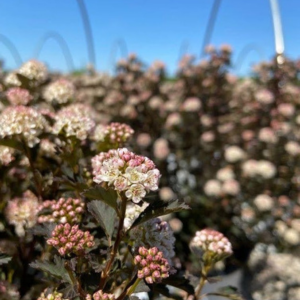
Tiny Wine® Ninebark (Physocarpus opulifolius)
Tiny Wine® Ninebark
Tiny Wine® Ninebark is a dream in the landscape. Pink-white flowers bloom up and down the stem for a lush display that complements purple foliage. Ninebark requires almost no maintenance, is drought tolerant and adapts to most soils. This dwarf variety matures to about 5 feet tall and 4 feet wide.
Tiny Wine® Ninebark blooms in spring on old wood. Use as a border plant or to cover bare spots in the garden. Companion plants are coneflowers, phlox and daylilies. Prune after bloom if desired. Plant in sun, in USDA Hardiness Zones 3 to 7.
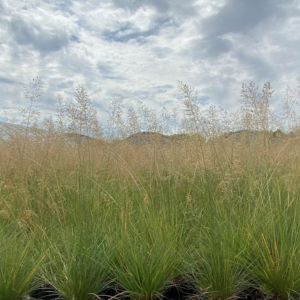
Prairie Dropseed Grass (Sporobolus heterolepis)
Prairie Dropseed
Prairie Dropseed has a soft, cascading habit. Tiny seeds dot its tan flower spikes in middle to late summer. Songbirds enjoy the seeds from late summer through winter. Leaves turn yellow-orange in fall. This grass spreads by reseeding itself, making it a no-fuss option for natural areas, municipal facilities and commercial properties with a sustainable environment.
Heat and drought tolerant, Prairie Dropseed adapts to most soil types, especially those that are dry and rocky. Flowers and foliage are fragrant. It is useful in larger containers as a “spiller.” Height and width at maturity is 3 feet. This grass prefers the sun. Plant in USDA Hardiness Zones 3 to 9.
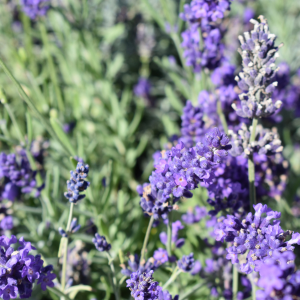
Lavender ‘SuperBlue’ (Lavandula angustifolia ‘SuperBlue’)
Lavender ‘SuperBlue’
From improving slumber to relieving anxiety, extremely fragrant Lavender ‘SuperBlue’ (English Lavender) has a plethora of benefits that promote health. It’s been known to lift mood, calm the nervous system and lower blood pressure. Plant lavender in cottage or cutting gardens and in containers for your patio, home and office.
This lavender attracts bees and butterflies to its vibrant blue flowers in summer. It is generally low maintenance and tolerates rabbits and deer, as well as drought, dry soil and air pollution. It prefers well-drained soils but lacks tolerance for winter stresses and high humidity. It is versatile in small spaces or in mass plantings. Lavender ‘SuperBlue’ requires full sun. It has a mature height and width of about 1 foot. Plant in USDA Hardiness Zones 5 to 8.
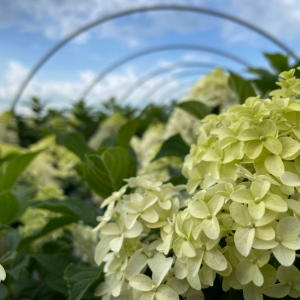
Quick Fire Fab® Panicle Hydrangea (Hydrangea paniculata)
Quick Fire Fab® Hydrangea
Large, lush and fluffy mophead blooms will make you look – and make you smile – at this showy shrub hydrangea. Peer closely. Florets on each bloom have an x–shape that adds textural interest. Panicles start vanilla-white in early summer. Want more color? Just wait!
As the season progresses through fall, panicles turn champagne pink, then vibrant pink and finally berry red. Quick Fire Fab® Hydrangea is easy to maintain as it blooms on new wood. This shrub has a mature height of 6 to 8 feet when in flower. Spread is 5 to 6 feet. Plant in part sun to sun, in USDA Hardiness Zones 3 to 8.
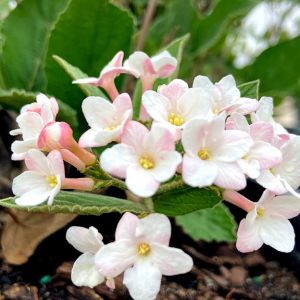
Judd viburnum (Viburnum x juddii)
Judd Viburnum
Perhaps among the loveliest of spring-blooming deciduous shrubs, Judd Viburnum’s spring blooms and fall fruits attract butterflies. Sweet white flowers resemble small snowballs. Pretty tear-drop shaped dark green leaves turn purple to deep red in fall.
Judd Viburnum gets its name from William H. Judd, who propagated the shrub and introduced it in 1920 at the Arnold Arboretum of Harvard University, Boston, Mass. It has good resistance to leaf spot and powdery mildew and has no serious issues with insects or disease. Plant it alone for its showiness, as a border or foundation shrub or as a hedge or screen. Mature height is 6 to 8 feet. Spread is 6 to 10 feet. Plant in part shade to full sun. Best in USDA Hardiness Zones 4 to 8.
Learn About Landscape Plants from Loma Vista Nursery
Loma Vista Nursery’s staff members are experts in the field. We love helping people learn and understand more about plants. Visit our plant catalog for information about trees, shrubs and perennial plants that are ideal for Midwest landscapes. To get answers to plant-related questions, send an email to sales@lomavistanursery.com or call (785) 229-7200.
Connect With Us
Stay current on our plant recommendations, growing tips and more by following us on social media.
